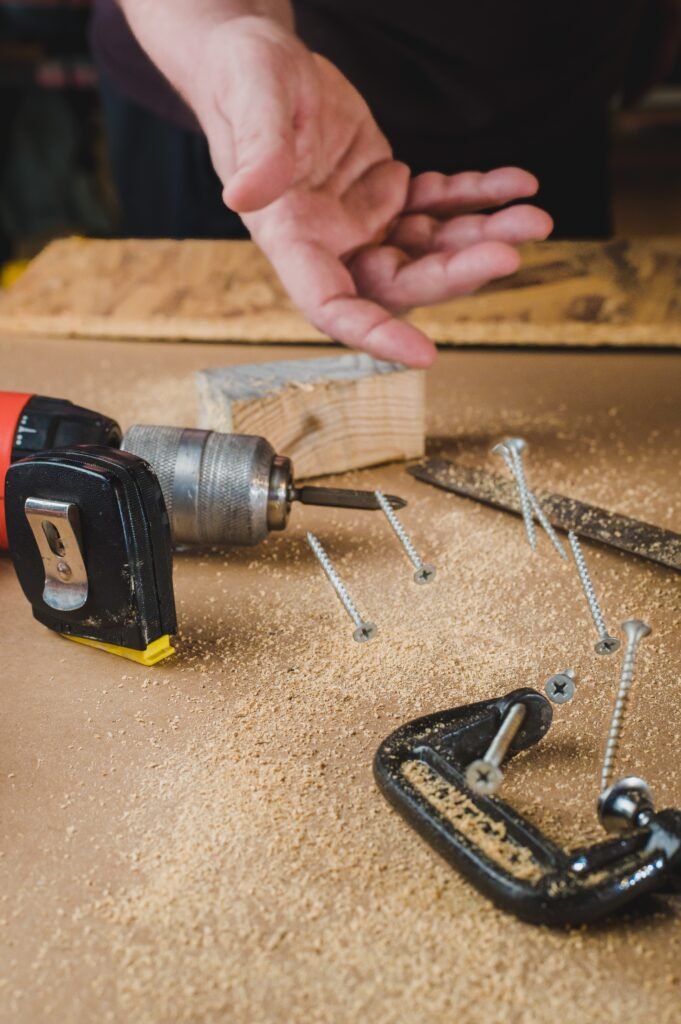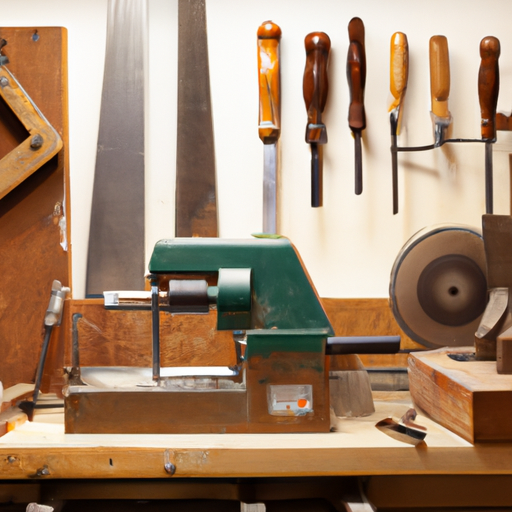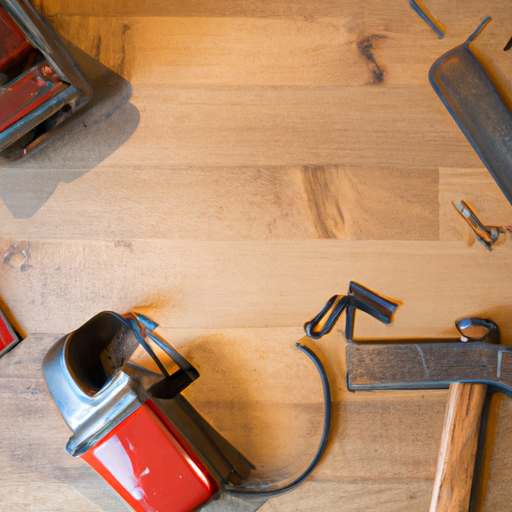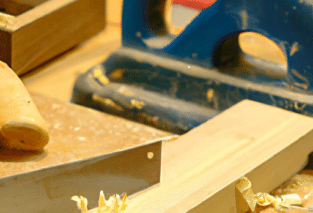In this article, we will explore the distinctions between hand tools and power tools in woodworking. You will learn about the benefits and drawbacks of each, as well as when it is more appropriate to use one over the other. Whether you are a beginner woodworker or an experienced craftsman, understanding these differences can greatly impact your woodworking projects. So, let’s dive in and discover the world of hand tools and power tools in woodworking!
Definition of Hand Tools
Hand tools are manual tools that are operated by hand to complete various woodworking tasks. These tools are typically non-powered and require physical effort to operate. Hand tools have been used in woodworking for centuries and continue to be essential for many woodworkers.
Overview of Hand Tools in Woodworking
In woodworking, hand tools play a crucial role in shaping, carving, cutting, and joining wood. These tools are favored by many woodworkers for their precision, control, and ability to create intricate details. Hand tools are often used for smaller woodworking projects or when a more personal touch is desired.
Types of Hand Tools Used in Woodworking
-
Chisels: Chisels are used for carving, shaping, and removing materials from wood. They come in different sizes and shapes, allowing woodworkers to create various cuts and finishes.
-
Hand saws: Hand saws are used for cutting wood into different sizes and shapes. They are available in different types, such as crosscut saws, rip saws, and dovetail saws, each designed for specific cutting tasks.
-
Planes: Planes are used to smooth and flatten wood surfaces. They remove small layers of wood to achieve a smooth, even finish.
-
Files and rasps: Files and rasps are used for shaping and smoothing wood surfaces. They remove small amounts of material and are ideal for refining curves and contours.
-
Clamps: Clamps are used to hold pieces of wood together securely during assembly. They ensure accurate and controlled joining of different wood components.
-
Screwdrivers: Screwdrivers are used to drive screws into wood and tighten or loosen them. They come in different types and sizes to accommodate various screw heads.
-
Hammers: Hammers are used for driving nails, setting wooden joints, and shaping wood. They come in different weights and handle lengths to suit different tasks.
Advantages of Hand Tools
Hand tools offer several advantages in woodworking, making them a preferred choice for many woodworkers.
Portability of Hand Tools
Hand tools are generally lightweight and portable, allowing you to easily bring them to different job sites or move around your workshop. They do not require a power source, making them convenient for woodworking tasks in remote locations or areas without electricity access.
Precision and Control with Hand Tools
Hand tools provide exceptional precision and control, enabling woodworkers to achieve intricate and detailed work. The manual operation of hand tools allows for subtle adjustments and fine-tuning, resulting in more accurate and personalized woodworking pieces.

Disadvantages of Hand Tools
Despite their advantages, hand tools also have some limitations and drawbacks in woodworking.
Limited Power and Efficiency of Hand Tools
Hand tools rely solely on physical effort to operate, which limits their power and efficiency compared to power tools. Certain tasks, such as cutting dense wood or removing large amounts of material, can be time-consuming and arduous with hand tools.
Physical Strain and Fatigue Associated with Hand Tools
The manual operation of hand tools can lead to physical strain and fatigue, especially during prolonged use or when tackling more demanding woodworking tasks. The repetitive nature of hand tool use can put stress on joints, muscles, and tendons, potentially causing discomfort or injury over time.
Definition of Power Tools
Power tools are tools that use electric or pneumatic power to operate. These tools are designed to provide increased speed, power, and efficiency in various woodworking tasks. Power tools have revolutionized the woodworking industry, enabling woodworkers to complete projects more quickly and with less physical effort.
Overview of Power Tools in Woodworking
Power tools are widely used in woodworking due to their ability to handle larger-scale projects and more demanding tasks. They offer increased productivity and enhanced capabilities compared to hand tools, making them indispensable for many woodworkers.
Types of Power Tools Used in Woodworking
-
Circular saws: Circular saws are used for making straight cuts in wood. They have a rotating circular blade that cuts quickly and efficiently, allowing for precise and accurate cuts.
-
Power drills: Power drills are versatile tools used for drilling holes and driving screws into wood. They offer different speed settings and features, such as adjustable torque control and hammer function, to accommodate various woodworking needs.
-
Sanders: Sanders are used for smoothing and refining wood surfaces. They remove material quickly and efficiently, providing a smooth finish that is ready for varnishing or painting.
-
Routers: Routers are used for shaping, carving, and hollowing out wood. They have a rotating bit that cuts and removes material, allowing for detailed and intricate woodworking designs.
-
Jigsaws: Jigsaws are used for cutting curves, angles, and intricate shapes in wood. They have a reciprocating blade that moves up and down rapidly, providing precise and controlled cutting action.
-
Miter saws: Miter saws are used for making angled cuts in wood. They have a rotating circular blade that can be adjusted to different angles, allowing for accurate and repeatable cuts.

Advantages of Power Tools
Power tools offer several advantages in woodworking, making them popular among professional woodworkers and hobbyists alike.
Increased Speed and Efficiency with Power Tools
Power tools significantly reduce the time and effort required to complete woodworking tasks. Their powered operation allows for faster cutting, drilling, and shaping, leading to increased productivity and efficiency.
Ability to Handle Complex Woodworking Tasks
Power tools are designed to handle more complex and demanding woodworking tasks that may be difficult or impossible to accomplish with hand tools alone. Their power and capabilities allow for the efficient cutting of dense wood, the removal of large amounts of material, and the creation of intricate designs.
Disadvantages of Power Tools
Despite their advantages, power tools also have some drawbacks and considerations in woodworking.
Higher Costs Associated with Power Tools
Power tools are generally more expensive than their hand tool counterparts. They require an initial investment, and additional costs may be incurred for maintenance, accessories, and replacement parts. However, the long-term benefits and time saved with power tools may outweigh these costs for many woodworkers.
Risk of Accidents and Injuries when Using Power Tools
Power tools can be dangerous if not used properly. The high-speed rotation of blades, the force exerted by drills, and the power of motors can pose risks of accidents and injuries. It is essential to follow safety guidelines, wear appropriate protective gear, and exercise caution when operating power tools.

Comparison of Hand Tools and Power Tools
When deciding between hand tools and power tools for woodworking, several factors should be considered.
Efficiency and Effectiveness in Woodworking Tasks
Hand tools excel in providing precision, control, and a personal touch to woodworking projects. They are ideal for smaller-scale projects, intricate detailing, and situations where power sources are not available. Power tools, on the other hand, offer increased speed, power, and efficiency, making them suitable for larger-scale projects, complex tasks, and repetitive cuts.
Suitability for Different Woodworking Projects
The choice between hand tools and power tools also depends on the specific woodworking project at hand. Some projects may require the finesse and control provided by hand tools, while others may benefit from the speed, power, and capabilities of power tools. Consider the project requirements, desired outcome, and personal preferences when making this decision.
Choosing the Right Tools for Woodworking
When choosing between hand tools and power tools for woodworking, several factors should be taken into account.
Factors to Consider when Deciding Between Hand Tools and Power Tools
-
Project requirements: Consider the size, complexity, and specific tasks involved in the woodworking project. Determine if hand tools or power tools would be more suitable to achieve the desired outcome efficiently.
-
Personal preferences and skill level: Consider your level of comfort and experience with both hand tools and power tools. Choose tools that you feel confident in using and that align with your preferred woodworking techniques.

Cost Considerations
Cost is an important factor to consider when deciding between hand tools and power tools for woodworking.
Comparing the Costs of Hand Tools and Power Tools
Hand tools generally have a lower upfront cost compared to power tools. However, power tools may offer long-term cost-effectiveness due to their increased productivity, time savings, and ability to handle complex tasks. Consider your budget, the frequency of tool usage, and the value you place on time saved when making this decision.
Long-term Investment and Cost-effectiveness
Power tools can be viewed as a long-term investment in your woodworking endeavors. They may require initial financial commitment, but they offer increased efficiency, productivity, and capabilities that can save time and enhance your woodworking output. Consider the long-term benefits and potential return on investment when evaluating the overall cost-effectiveness of power tools.
Conclusion
When considering the differences between hand tools and power tools in woodworking, it is essential to evaluate the advantages and disadvantages of each. Hand tools offer precision, control, and portability, while power tools offer speed, power, and efficiency. The choice between the two depends on the specific woodworking tasks, project requirements, personal preferences, and budget considerations. Evaluating the trade-offs and selecting the right tools based on accurate project requirements and individual preferences is crucial for successful woodworking endeavors.






